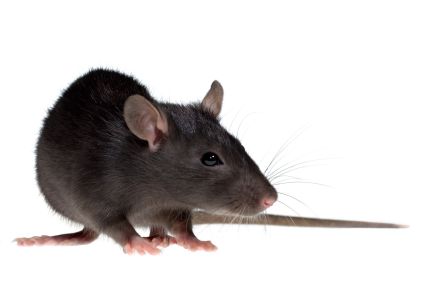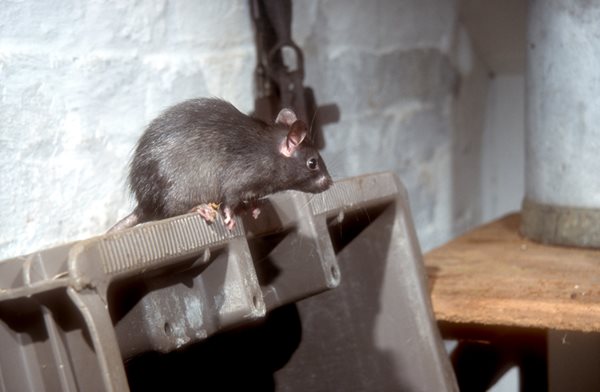The most common roof rat is the black rat. It has smooth hair, large ears, a pointy nose, and a tail longer than its body. While its body is black, its belly is gray. The Alexandrine rat appears gray, but its fur is agouti, meaning there is more than one color on each strand of hair. You may also see brown and yellow blends of fur. The fruit rat is agouti on its back but white on its belly.
No matter the subspecies, roof rats, including their tail, are usually no longer than 16 inches long.
Roof Rats vs. Other Rodents
Roof rats are frequent visitors to yards and homes across the country. Their bodies are seven or eight inches in length, though their bald, scaly tails add up to ten more inches.
Other identifying traits include:
- their pointed noses
- hairless ears
- dark fur with light colored underbellies.
Similar rodents, such as the Norway rat and house mouse, are also commonly found in residential areas.

Are They on The Roof?
These rodents are arboreal, which means they enjoy living in trees. When foraging outdoors, roof rats prefer yards with fruit or nut-bearing trees. In homes, they can be found in attics, wall voids, and other elevated areas, including roofs. This sets them apart from their burrowing or nesting counterparts, who are more likely to be found in basements.
Disease & Damage
As roof rats scavenge for sustenance indoors, they contaminate food, resulting in costly waste. Like most other rodents, they carry diseases that can be spread to humans. Health concerns include salmonellosis and Hantavirus, as well as Lyme disease, which can be carried by infected ticks in the pests’ fur. Due to these possible risks, homeowners should rely on the professionals at Critter Control to identify and manage roof rat infestations.
Roof Rat Images
